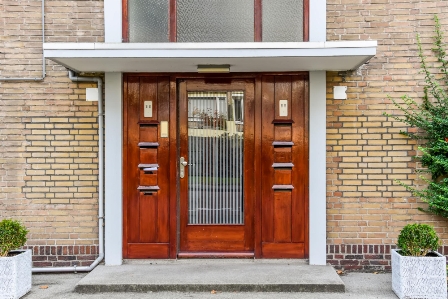Doors have been a ubiquitous part of human existence for centuries. They are integral to our daily lives, offering access, privacy, and security. Have you ever wondered just how many doors there are in the world? In this article, we embark on a journey to explore this intriguing question, attempting to unveil the hidden numbers that encircle us every day.
The Origins of Doors
Understanding the history of doors
To comprehend the grand scale of doors worldwide, it’s essential to delve into their origins. We will examine how doors have evolved over time, from primitive constructions to today’s high-tech access points.
Types of Doors

the diverse types of doors based on their functions and materials, showcasing the remarkable variety that adds to the global door count:
Swing Doors
- Function: Swing doors are the most common type found in homes and commercial spaces. They open and close by swinging on hinges and are often used for room entry.
- Materials: Swing doors can be constructed from wood, metal, glass, or a combination of materials.
Sliding Doors
- Function: Sliding doors move horizontally along a track. They are space-saving and frequently used for closets, patio access, and interior room dividers.
- Materials: Sliding doors are typically made of glass, but some may have wooden or metal frames.
Folding Doors
- Function: Folding doors, also known as accordion doors, consist of panels that fold back to create an open space. They are suitable for large openings and are often used in homes and commercial settings.
- Materials: Folding doors can be crafted from wood, vinyl, or aluminum.
Revolving Doors
- Function: Revolving doors are commonly found in commercial and public buildings. Commercial revolving doors feature multiple door panels that rotate around a central axis, allowing people to enter and exit simultaneously without letting in outdoor elements.
- Materials: Revolving doors are typically constructed with glass panels and metal frames.
Barn Doors
- Function: Barn doors are a rustic and stylish choice often used in homes for both interior and exterior applications. They slide along a wall and add a touch of character to the space.
- Materials: Barn doors are often made from wood, though some may incorporate metal elements for a modern twist.
Security Doors
- Function: Security doors are designed to enhance safety. They are sturdy and feature reinforced materials, locking systems, and may include features like peepholes.
- Materials: Security doors are made from metal, such as steel or wrought iron.
Fire Doors
- Function: Fire doors are crucial for fire safety in buildings. They are designed to contain the spread of fire and smoke, providing a barrier to protect occupants during emergencies.
- Materials: Fire doors are typically made from fire-resistant materials like steel or other composite materials.
Automatic Doors
- Function: Automatic doors open and close without manual effort. They are commonly used in commercial settings, providing convenience and accessibility.
- Materials: Automatic doors often feature glass panels and metal frames.
Revolving Garage Doors
- Function: These are specialized doors used in large garages, such as those in car dealerships. They rotate in a circular motion to allow vehicles in and out.
- Materials: Revolving garage doors are primarily made of metal.
French Doors
- Function: French doors are known for their elegant, double-door design. They are used for interior and exterior access, typically in homes and upscale settings.
- Materials: French doors often feature wooden frames and glass panels.
Pivot Doors
- Function: Pivot doors swing on a pivot hinge, often located at the top and bottom of the door, providing a unique and modern appearance.
- Materials: Pivot doors can be crafted from a variety of materials, including glass, wood, and metal.
Revolving Bookcase Doors
- Function: These hidden doors are concealed as bookshelves and can be rotated to reveal a hidden room or space, adding an element of surprise and intrigue.
- Materials: Revolving bookcase doors are typically made from wood to blend seamlessly with the surrounding bookshelves.
These are just a few examples of the many door types that exist in the world, each serving specific functions and contributing to the diverse landscape of global doors.
Doors in Residential Buildings

The role of doors in our homes
Let’s explore the doors in our daily lives. From the front door to bedroom doors, we’ll get an estimate of how many residential doors exist across the world.
The Door Manufacturing Industry
The driving force behind door proliferation
The door manufacturing industry plays a pivotal role in supplying doors to the world. We’ll delve into its significance and its contribution to the global door count.
Doors in Transportation
Doors on wheels, wings, and waves
Transportation methods also rely on doors, whether in cars, planes, or ships. This section will provide insights into the vast number of doors moving with us across the globe.
Environmental Impact of Doors
Sustainable door practices
Considering the environmental impact of doors is crucial in today’s world. We will touch upon eco-friendly door materials and their growing popularity.
Counting the Doors
The challenge of estimating
Calculating the exact number of doors in the world is a challenging task. In this section, we will discuss various methods used to estimate this vast number.
Factors that Affect the Number of Doors
there are several factors that can significantly affect the number of doors in various regions and contexts around the world. Here are some of the key factors that influence the quantity of doors:
Population Density:
Areas with higher population densities tend to have more doors. This is because densely populated regions have a greater number of residential buildings, commercial spaces, and public facilities, all of which require doors for entry and exit.
Urbanization:
Urban areas often have more doors than rural regions due to the higher concentration of buildings and infrastructure. Urbanization leads to increased construction and, consequently, more doors in buildings.
Economic Development:
The level of economic development in an area has a direct impact on the number of doors. Wealthier regions tend to have more construction projects, including residential and commercial buildings, leading to a higher demand for doors.
Housing Trends:
Housing trends and architectural styles can influence the number of doors in homes. For example, modern open-concept designs may reduce the number of interior doors, while traditional layouts have more doors separating rooms.
Commercial and Industrial Activity:
Areas with thriving commercial and industrial sectors require a substantial number of doors for businesses, warehouses, factories, and more. The intensity of economic activity directly affects the demand for doors.
How Technology Can Help in Counting Doors

Technology has proven to be a valuable tool in many aspects of our lives, including the ability to accurately count doors. Here’s how technology can assist in counting doors effectively:
Satellite Imagery and Aerial Surveys:
High-resolution satellite imagery and aerial surveys provide a bird’s-eye view of urban areas. Advanced image recognition algorithms can be applied to detect and count doors in buildings from these images.
Geospatial Mapping Software:
Geospatial mapping tools like Geographic Information Systems (GIS) can be used to create detailed maps that include the locations of buildings. These maps can be analyzed to estimate the number of doors in a specific area.
Remote Sensing Technology:
Remote sensing technologies, such as LiDAR (Light Detection and Ranging) and photogrammetry, can create 3D models of buildings. By analyzing these models, it’s possible to count the doors in each structure.
Computer Vision and Machine Learning:
Computer vision and machine learning algorithms can be trained to recognize and count doors in images or video footage. These algorithms can scan large datasets quickly and with high accuracy.
Smart Cameras and IoT Devices:
Smart cameras equipped with image recognition capabilities can be installed in urban areas, allowing real-time door counting. These cameras can be connected to the Internet of Things (IoT) network for data analysis.
FAQs
Here are the answers to your FAQs:
It’s safe to say that there are significantly more wheels in the world than doors. Wheels are integral to various forms of transportation, machinery, and countless other applications, making them far more common than doors.
The precise number of doors produced each year can vary greatly by region, industry demand, and economic factors. However, it’s estimated that millions of doors are manufactured annually across the globe to meet the needs of residential, commercial, and industrial sectors.
Yes, doors have been in existence for thousands of years. Archaeological evidence shows that ancient civilizations, such as the Egyptians and Mesopotamians, used doors as early as 5000 years ago. These doors, while simpler in design compared to today’s standards, served similar functions.
The mention of “1000 in doors” isn’t a standard term or concept related to doors. If you’re referring to the quantity of doors in specific contexts, it would depend on the particular setting you’re interested in.
The term “a-60” in the context of Roblox doors could refer to a specific door type or attribute within the Roblox gaming platform. The rarity of such doors would depend on the game developer’s design and how they’ve implemented this feature in their game. It’s not a standard measure of rarity in the real world but rather a game-specific concept.
Conclusion
The sheer number of doors worldwide is staggering. From the humble front door to the digital doors we access daily, they are an integral part of our lives. Though the exact count remains elusive, our world is undoubtedly filled with countless doors.

